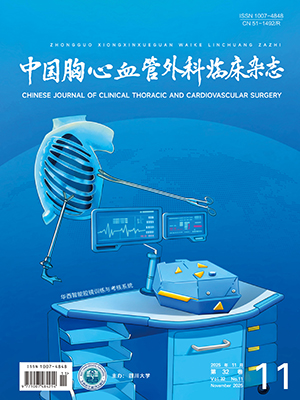| 1. |
World Health Organization. Global tuberculosis report 2024. Geneva: World Health Organization, 2024.
|
| 2. |
World Health Organization. Global tuberculosis report 2023. Geneva: World Health Organization, 2023.
|
| 3. |
World Health Organization. Global tuberculosis report 2022. Geneva: World Health Organization, 2022.
|
| 4. |
World Health Organization. Global tuberculosis report 2021. Geneva: World Health Organization, 2021.
|
| 5. |
World Health Organization. Global tuberculosis report 2020. Geneva: World Health Organization, 2020.
|
| 6. |
舒薇, 刘宇红. 世界卫生组织《2023年全球结核病报告》解读. 结核与肺部疾病杂志, 2024, 5(1): 15-19.Shu W, Liu YH. Interpretation of the World Health Organization global tuberculosis report 2023. J Tuberc Lung Dis, 2024, 5(1): 15-19.
|
| 7. |
李媛媛, 谢晶晶, 李树涛, 等. 2024年WHO全球结核病报告: 全球与中国关键数据分析. 新发传染病电子杂志, 2024, 9(6): 92-98.Li YY, Xie JJ, Li ST, et al. 2024 WHO tuberculosis report: key data analysis for China and the global world. Electron J Emerg Infect Dis, 2024, 9(6): 92-98.
|
| 8. |
胡鑫洋, 高静韬. 世界卫生组织《2024年全球结核病报告》解读. 结核与肺部疾病杂志, 2024, 5(6): 500-504.Hu XY, Gao JT. Interpretation of the World Health Organization global tuberculosis report 2024. J Tuberc Lung Dis, 2024, 5(6): 500-504.
|
| 9. |
舒薇, 刘宇红. 笃志创新躬行致远: 世界卫生组织《2023年全球结核病报告》结核病科学研究章节解读. 中国防痨杂志, 2024, 46(6): 613-617.Shu W, Liu YH. Dedicating to innovation, practicing to achieve targets: interpretation of research & innovation part of the WHO global tuberculosis report 2023. Chin J Antituberc, 2024, 46(6): 613-617.
|
| 10. |
任坦坦, 陆普选, 邓国防, 等. 2020 WHO全球结核报告: 全球与中国关键数据分析. 新发传染病电子杂志, 2020, 5(4): 280-284.Ren TT, Lu PX, Deng GF, et al. 2020 WHO tuberculosis report: key data for China and the whole world. Electron J Emerg Infect Dis, 2020, 5(4): 280-284.
|
| 11. |
高静韬, 刘宇红. 2021年世界卫生组织全球结核病报告要点解读. 河北医科大学学报, 2022, 43(7): 745-749.Gao JT, Liu YH. Interpretation of key points from the 2021 World Health Organization global tuberculosis report. J Hebei Med Univ, 2022, 43(7): 745-749.
|
| 12. |
舒薇, 孙玙贤, 张立杰, 等. 结核病的研究与创新—2021年世界卫生组织全球结核病报告解读. 中国防痨杂志, 2022, 44(1): 45-48.Shu W, Sun YX, Zhang LJ, et al. Tuberculosis research and innovation: interpretation of the World Health Organization global tuberculosis report 2021. Chin J Antituberc, 2022, 44(1): 45-48.
|
| 13. |
高静韬, 刘宇红. 2020年世界卫生组织全球结核病报告要点解读. 河北医科大学学报, 2021, 42(1): 1-6.Gao JT, Liu YH. Interpretation of key points from the 2020 World Health Organization global tuberculosis report. J Hebei Med Univ, 2021, 42(1): 1-6.
|
| 14. |
卢春容, 谭卫国, 陆普选, 等. 2023年WHO全球结核病报告: 全球与中国关键数据分析. 新发传染病电子杂志, 2023, 8(6): 73-78.Lu CR, Tan WG, Lu PX, et al. 2023 WHO tuberculosis report: key data analysis for China and the global world. Electron J Emerg Infect Dis, 2023, 8(6): 73-78.
|
| 15. |
舒薇, 刘宇红. 精进臻善惟实励新: 世界卫生组织《2022年全球结核病报告》解读. 中国防痨杂志, 2023, 45(5): 454-457.Shu W, Liu YH. Strive for excellence with an emphasis on fundamentals and innovations: interpretation of the WHO global tuberculosis report 2022. Chin J Antituberc, 2023, 45(5): 454-457.
|
| 16. |
谭隽怡, 向明确, 李天驹, 等. 营养因素与结核病患者预后相关研究进展. 中国感染与化疗杂志, 2024, 24(3): 366-370.Tan JY, Xiang MQ, Li TJ, et al. Research updates on the effects of nutritional factors on outcomes of tuberculosis patients. Chin J Infect Chemother, 2024, 24(3): 366-370.
|
| 17. |
宋敏, 陆普选, 方伟军, 等. 2022年WHO全球结核病报告: 全球与中国关键数据分析. 新发传染病电子杂志, 2023, 8(1): 87-92.Song M, Lu PX, Fang WJ, et al. The global tuberculosis report 2022: key data analysis for China and the global world. Electron J Emerg Infect Dis, 2023, 8(1): 87-92.
|
| 18. |
卢春容, 房宏霞, 陆普选, 等. WHO 2021年全球结核病报告: 全球与中国关键数据分析. 新发传染病电子杂志, 2021, 6(4): 368-372.Lu CR, Fang HX, Lu PX, et al. 2021 WHO tuberculosis report: key data analysis for China and the global world. Electron J Emerg Infect Dis, 2021, 6(4): 368-372.
|
| 19. |
梁晨, 于佳佳, 唐神结. 世界卫生组织《全球结核病报告2022》解读. 诊断学理论与实践, 2023, 22(1): 21-30.Liang C, Yu JJ, Tang SJ. Interpretation of the global tuberculosis report 2022 by World Health Organization. J Diagn Concepts Pract, 2023, 22(1): 21-30.
|
| 20. |
国家疾病预防控制局, 中华人民共和国国家卫生健康委员会, 中华人民共和国国家发展和改革委员会, 等. 全国结核病防治规划 (2024—2030年). 新发传染病电子杂志, 2025, 10(1): 94-96.National Disease Control and Prevention Administration, National Health Commission of the People's Republic of China, National Development and Reform Commission, et al. National tuberculosis prevention and control plan (2024-2030). Electron J Emerg Infect Dis, 2025, 10(1): 94-96.
|
| 21. |
陈伟, 李雪, 刘小秋, 等. 《全国结核病防治规划(2024—2030年)》解读. 中国防痨杂志, 2025, 47(2): 130-136.Chen W, Li X, Liu XQ, et al. Interpretation and explanation about the National Tuberculosis Prevention and Control Plan (2024-2030). Chin J Antituberc, 2025, 47(2): 130-136.
|
| 22. |
李仁忠, 阮云洲, 徐彩红, 等. 世界卫生组织利福平耐药结核病患者数估算方法. 中国防痨杂志, 2023, 45(3): 328.Li RZ, Ruan YZ, Xu CH, et al. World Health Organization estimation method for the number of patients with rifampicin-resistant tuberculosis. Chin J Antituberc, 2023, 45(3): 328.
|
| 23. |
World Health Organization. WHO consolidated guidelines on tuberculosis. Module 4: treatment and care. Geneva: World Health Organization, 2025.
|
| 24. |
初乃惠, 聂文娟. 耐药结核病全口服短程治疗专家共识. 中国防痨杂志, 2025, 47(7): 830-839.Chu NH, Nie WJ. Expert consensus on total oral short-course therapy for drug-resistant tuberculosis. Chin J Antituberc, 2025, 47(7): 830-839.
|
| 25. |
舒薇, 刘宇红. 矢志革新履践致远: 《2024年全球结核病报告》结核病科学研究章节解读. 中国防痨杂志, 2025, 47(2): 137-141.Shu W, Liu YH. Committed to innovation and striving for long-term progress: interpretation of research and innovation chapter in the global tuberculosis report 2024. Chin J Antituberc, 2025, 47(2): 137-141.
|
| 26. |
张慧, 范明宽. 结核分枝杆菌感染检测技术应用专家共识. 中国防痨杂志, 2025, 47(7): 813-829.Zhang H, Fan MK. Expert consensus on the application of Mycobacterium tuberculosis infection detection technologies. Chin J Antituberc, 2025, 47(7): 813-829.
|
| 27. |
Cox H, Workman L, Bateman L, et al. Oral swab specimens tested with Xpert MTB/RIF ultra assay for diagnosis of pulmonary tuberculosis in children: a diagnostic accuracy study. Clin Infect Dis, 2022, 75(12): 2145-2152.
|
| 28. |
Olson AM, Wood RC, Weigel KM, et al, et al. High-sensitivity detection of mycobacterium tuberculosis DNA in tongue swab samples. J Clin Microbiol, 2025, 63(2): e0114024.
|
| 29. |
MacLean E, Sulis G, Denkinger CM, et al. Diagnostic accuracy of stool Xpert MTB/RIF for detection of pulmonary tuberculosis in children: a systematic review and meta-analysis. J Clin Microbiol, 2019, 57(6): e02057-18.
|
| 30. |
You Y, Ni YM, Shi G. Diagnostic accuracy of metagenomic next-generation sequencing in pulmonary tuberculosis: a systematic review and meta-analysis. Syst Rev, 2024, 13(1): 317.
|
| 31. |
Yang M, Dai G, Li D, et al. A cytoderm metabolic labeling TPAPy-Tre for real-time detection of vitality of Mycobacterium tuberculosis in sputum. Microbiol Spectr, 2025, 13(7): e0245724.
|
| 32. |
蒋文明, 钱朝霞. 结核分枝杆菌特异性干扰素-γ和白介素-2联合检测对肺结核的辅助诊断价值. 实用医学杂志, 2022, 38(16): 2114-2116.Jiang WM, Qian ZX. The value of specific interferon-γ and interleukin-2 detection for tuberculosis in auxiliary diagnosis. J Prac Med, 2022, 38(16): 2114-2116.
|
| 33. |
仵倩红, 张燕, 刘鑫. 多学科持续发力终结结核病流行. 结核与肺部疾病杂志, 2024, 5(4): 279-282.Wu QH, Zhang Y, Liu X. Continuous efforts in multiple disciplines to end the tuberculosis epidemic. J Tuberc Lung Dis, 2024, 5(4): 279-282.
|
| 34. |
张慧, 赵雁林, 严俊. 我国结核病预防控制进展与挑战. 中国预防医学杂志, 2025, 26(1): 1-7.Zhang H, Zhao YL, Yan J. Progress and challenges in tuberculosis prevention and control in China. Chin Prev Med, 2025, 26(1): 1-7.
|




